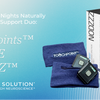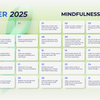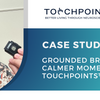Transforming ADHD Therapy: How TouchPoints Can Help Therapists

Attention Deficit Hyperactivity Disorder (ADHD) is a neurodevelopmental condition that can significantly impact individuals' lives. Therapists working with ADHD patients often encounter various challenges that can hinder treatment progress. This blog will discuss some of the most common hurdles therapists face and how TouchPoints, a wearable technology, can provide valuable support.
Understanding and Diagnosing ADHD
Based on specific symptoms, ADHD can be diagnosed in three types, according to the National Institute of Mental Health: Inattentive, Hyperactive-Impulsive, and Combined. Primary care providers and mental health professionals typically follow these steps when diagnosing ADHD:
- Comprehensive Evaluation: This involves thoroughly reviewing the individual's medical and mental health history, including mood and past or current conditions.
- Behavioral Assessment: The provider may gather information about the individual's behavior in different settings from family, friends, teachers, or colleagues.
- Standardized Assessments: Standardized behavior rating scales or ADHD symptom checklists are used to determine if the criteria for diagnosis are met.
- Psychological Testing: Cognitive tests may be administered to assess skills like working memory, executive functioning, and reasoning, helping to rule out other potential conditions.
Common Challenges in ADHD Therapy Based on Diagnosis
-
Inattentive ADHD
- Difficulty Focusing: Patients with inattentive ADHD may struggle to stay on task, quickly becoming distracted by irrelevant stimuli. This can hinder their engagement in therapy sessions and completing homework assignments.
- Poor Organization: Difficulty organizing thoughts, materials, and tasks can make it challenging for patients to follow treatment plans and stay on top of their responsibilities.
-
Hyperactive-Impulsive ADHD
- Restless and Fidgeting: Constant restlessness and fidgeting can make it difficult for patients to sit still during therapy sessions and follow instructions.
- Impulsive Behavior: Impulsive behavior can lead to difficulties in interpersonal relationships, academic performance, and career success.
-
Combined ADHD
- Combination of Symptoms: Patients with combined ADHD experience both inattentive and hyperactive-impulsive symptoms, making it even more challenging to manage their condition.
- Overwhelming Challenges: The combination of symptoms can lead to overwhelming and frustration, making it difficult to engage in therapy and make progress.
Common Challenges Across All Subtypes
- Medication Management: Medication can be a valuable tool for managing ADHD symptoms, but it can also present challenges, such as side effects and the need for careful monitoring.
- Executive Function Difficulties: Planning, organization, and time management are essential skills that can be impaired in ADHD, making it difficult for patients to follow through with treatment goals.
- Emotional Regulation Issues: Difficulty managing emotions can lead to mood swings, impulsivity, and stress, which can interfere with therapeutic progress.
- Lack of Motivation: Patients with ADHD may struggle with motivation, making it difficult to attend therapy sessions and complete homework assignments.
Understanding how ADHD is diagnosed can provide valuable insights into therapists' challenges when working with patients. By recognizing the specific symptoms and underlying cognitive difficulties associated with ADHD, therapists can tailor their treatment plans to address the unique needs of each individual.
How TouchPoints Can Complement ADHD Treatment
Once a diagnosis is established, TouchPoints, as wearable technology designed to reduce stress and improve focus, can be a valuable complementary therapy for individuals with ADHD.
TouchPoints uses patented Bilateral Alternating Stimulation in Tactile Form (BLAST) to alter the body's stress response. BLAST uses a technique of gentle vibrations delivered alternately to each side of the body, stimulating the autonomic nervous system, the body's stress management center, and promoting a sense of calm and focus.
Here's how understanding the diagnostic process can inform the use of TouchPoints:
- Personalized Treatment: By identifying the specific type of ADHD, therapists can select appropriate TouchPoint settings and techniques to address the primary symptoms.
- Improved Executive Function Skills: Studies have shown that TouchPoints can help individuals with ADHD improve their executive function skills, such as working memory and planning, which are often affected by the condition. This can enhance their ability to engage in therapy sessions and implement strategies learned.
- Managing Emotional Regulation: For individuals with ADHD who struggle with emotional regulation, TouchPoints can provide a tool for calming down and managing stress, which can improve their overall well-being and make therapy sessions more productive.
- Supporting Medication Management: TouchPoints can be used with medication to enhance effectiveness and reduce the need for higher dosages or additional medications.
TouchPoints for ADHD can be a valuable tool for therapists. By addressing common challenges such as medication management, executive function difficulties, emotional regulation issues, and lack of motivation, TouchPoints can help patients make significant progress in their therapy.
By incorporating TouchPoints into ADHD therapy, therapists can provide a more comprehensive and effective approach to helping patients manage their symptoms and create tailor-fit treatment plans that can lead to improved outcomes and a better quality of life for patients.




